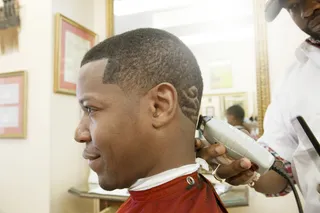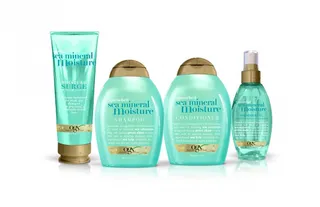Expert Tips for Keeping Your Hair Looking Right
For the best locs, cornrows and 'fros.

1 / 11
Naturally Cool - Whether you rock an Afro, cornrows or locs, you want your hair to look as attractive — and professional — as you are. We went to the experts for easy insider tips on how to reach your goal. By Kenrya Rankin Naasel (Photo: Bernd Vogel/Corbis)

2 / 11
Line It Up - When you’re growing out a close-cropped cut, it’s important to keep things sharp. “While transitioning from a short hair style, guys should always stay groomed by getting line ups from their barbers,” says Glen Ettienne, owner of De Lux Gallery in Brooklyn, which specializes in locs and other natural styles. "A fresh line will pull your whole look together." (Photo: Corbis)
Photo By Photo: Corbis

3 / 11
Do the Twist - Looking for a style to wear until your hair is long enough to cornrow or loc? “The most popular transitioning styles for brothers are comb twists and two-strand or Senegalese twists,” says Sheila Everette-Hale, owner of Everette's Natural Hair and Beauty School and Salon in Detroit. And barber Glen Ettienne says you can extend that look even further just by untwisting them. “These twists can be worn for about a week, then taken apart to be worn as a twist out, or funky TWA (teeny weeny Afro),” he explains. Either way, a natural hair pro can hook you up. (Photo: John Lund/Marc Romanelli/Blend Images/Corbis)

4 / 11
Shape Up - Working on an epic Afro? Everette-Hale says you still need to see your barber every two weeks to keep it perfectly round. (Photo: Erik Isakson/Blend Images/Corbis)
Photo By Photo: Erik Isakson/Blend Images/Corbis

5 / 11
Tools of the Trade - A pick is more than just an iconic throwback to the ’60s and ’70s. It is the number one tool you need in your arsenal to get your Afro symmetrical. Tool number two is oil. “Use oil sheen to add shimmer and shine to your Afro and keep your hair healthy and moisturized. Stay away from heavy cream moisturizers that tend to shed and flake once the hair is dry,” Everette-Hale says.(Photo: Rubberball/Corbis)
ADVERTISEMENT

6 / 11
Be Uptight - To keep your cornrows ready for work or play, have them rebraided regularly. “That means every two to three weeks, depending on the style and size, as well as your hair’s curl pattern, texture and length,” says Everette-Hale. (Photo: Plush Studios/Blend Images/Corbis)

7 / 11
Sleep Well - “To get longer wear out of braids, wrap them up at night with a du-rag,” Everette-Hale says. If you can’t sleep comfortably with something on your head, use a silk pillowcase.(Photo: Granitz/WireImage)

8 / 11
Start Right - A little planning can help you cultivate the look you want from your locs. Ettienne suggests waiting until you have at least two inches of growth before you begin growing them, enough hair so you can have the desired thickness you want. “When you start them when the hair is way short, you usually end up with too thin locks that break as time goes on,” he explains. Once you have enough hair, head to a pro. “It is best to have a professional loctician start your locs to determine size, parting (grid) and the technique that’s appropriate for your hair type, lifestyle and budget,” advises Everette-Hale. (Photo: Patrik Giardino/Corbis)

9 / 11
Know Your Environment - While we have no time for companies that think they can control a person's image, it is important that every element of your look be in line with the image you wish to project to the world. “Brothers who wear locs in the corporate environment must consider size, length, grooming regimen, styling and even color. Those who are in management may consider thinner, more refined locs. And if coloring, stay in the more natural color tones,” Everette-Hale says. Ettienne also suggests growing them at about shoulder or mid-back length, because they can be pulled up for a more professional look. “Keep your hair looking sharp to match that suit!” (Photo:145/Scott Quinn Photography/Ocean/Corbis)

10 / 11
Take Care - It’s easy to maintain your locs at home. Ettienne suggests the following routine: Shampoo twice and condition once, then towel dry. Use locking gel and clips and start twisting from the back; apply a little gel to each loc and use a double prong metal clip to pin it to your head. Leave clips on until it’s all dry, which will take at least 45 minutes under a hood dryer (use a blow dryer if you don’t have one). For daily care, a du-rag is your friend. “Tie your hair down with a silk or rayon scarf when you sleep to keep hair neat; never use cotton because it absorbs all the moisture from your hair,” he says. “Wear a shower cap to keep your locs from frizzing and untwisting, and use a thin oil periodically — thicker oils and pomades may cause build up.” Jojoba, which is available at health food stores, is a super moisturizing, nearly scent-free option. (Photo: ...
Photo By Photo: OGX Hair
